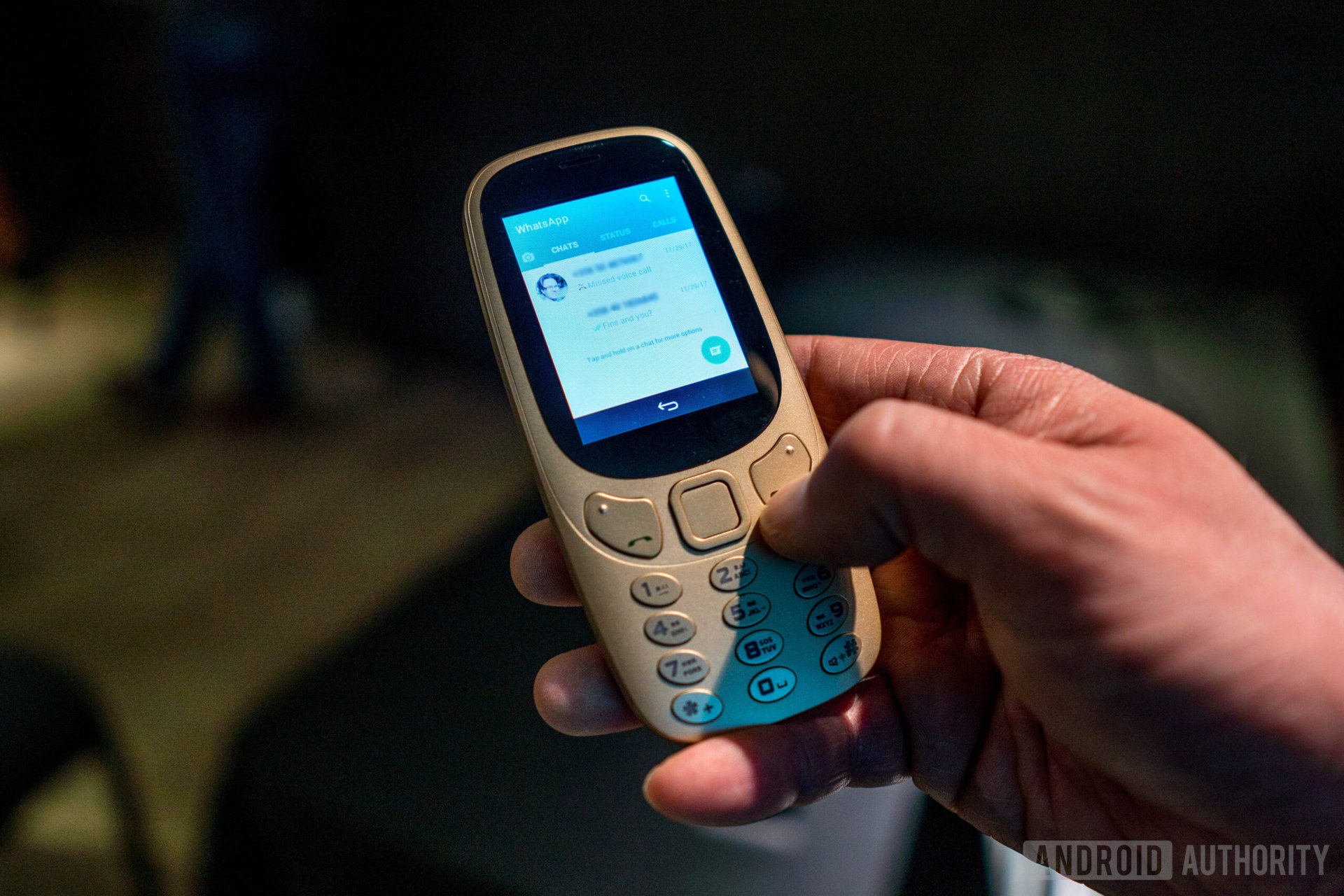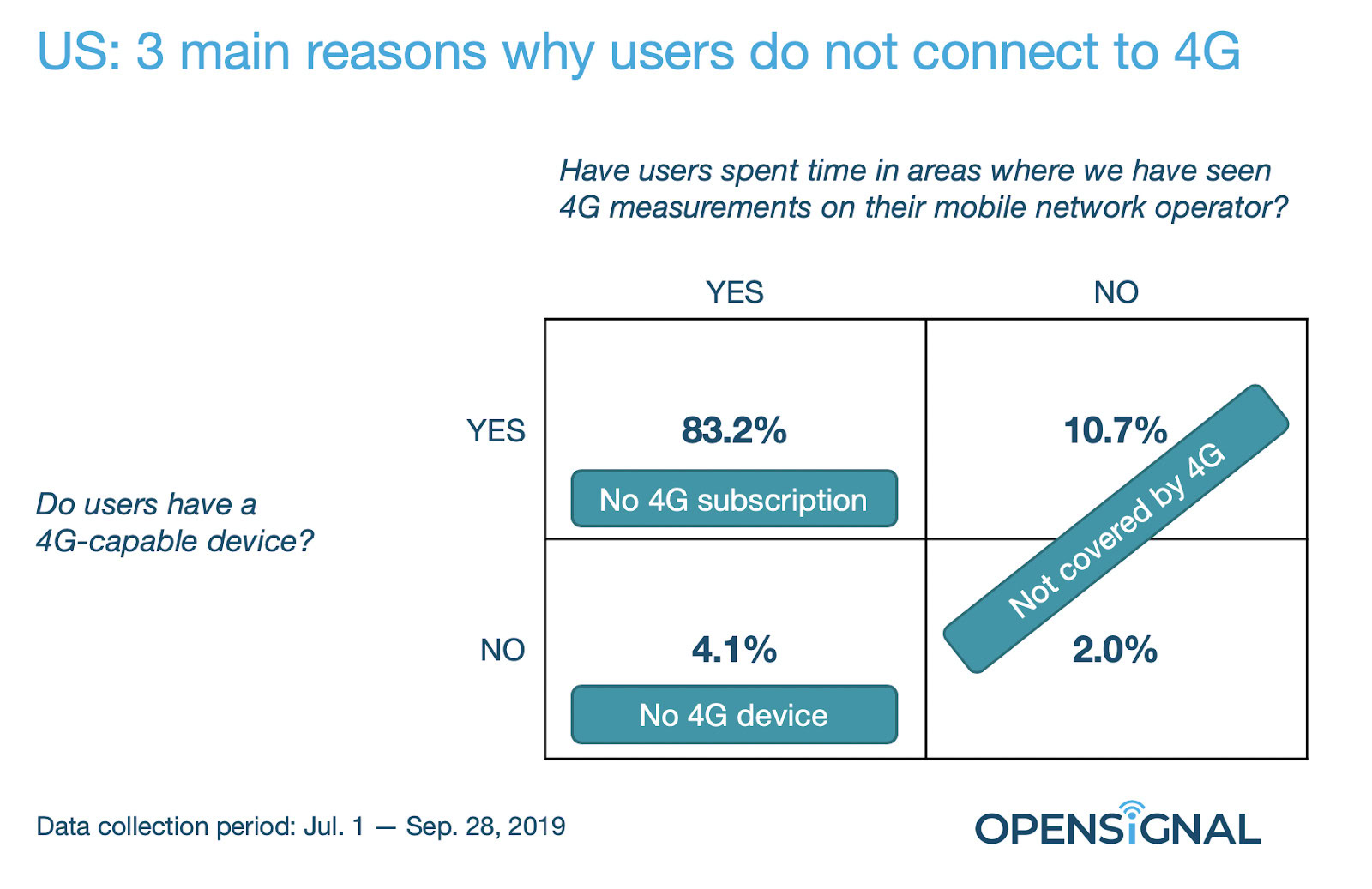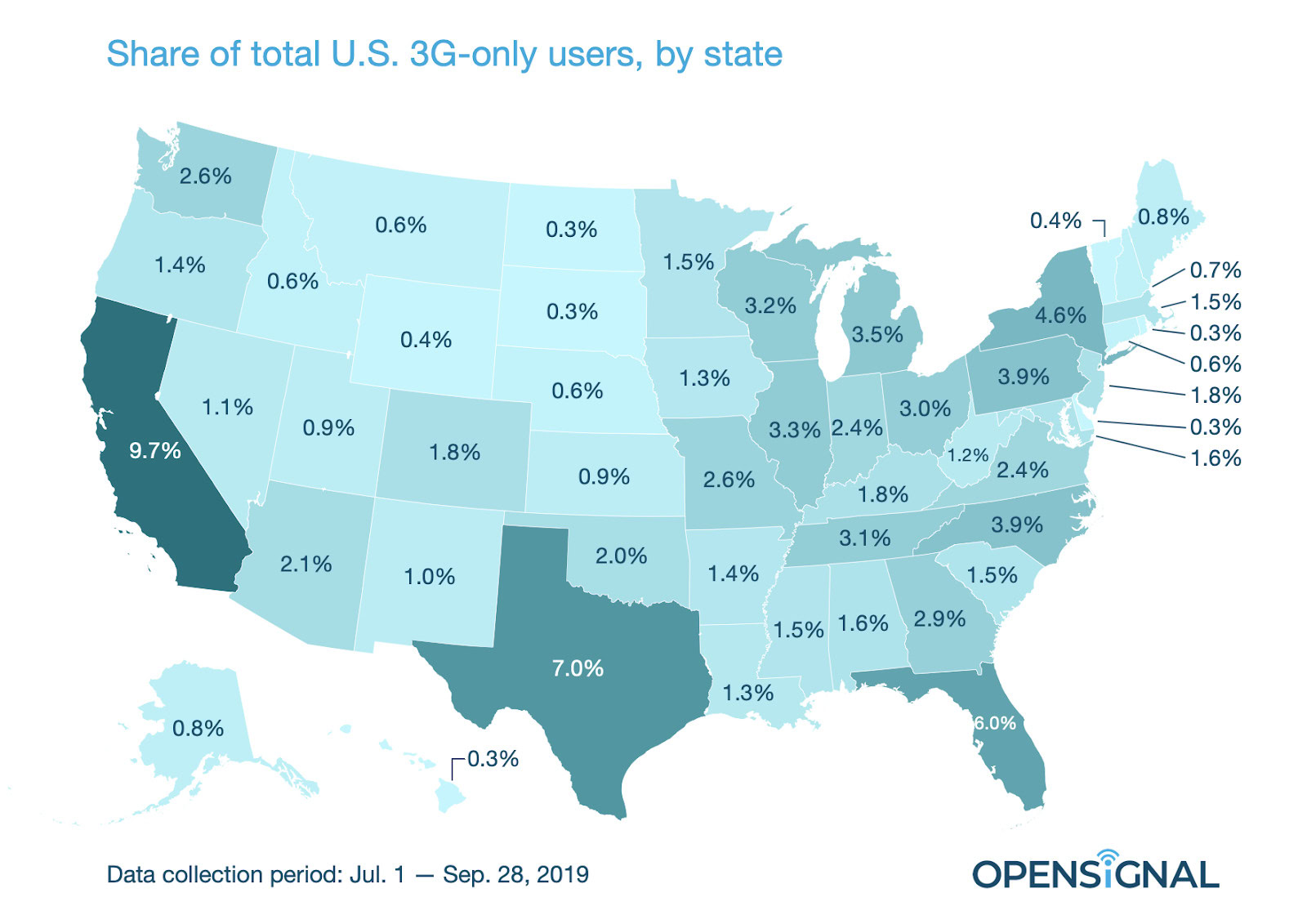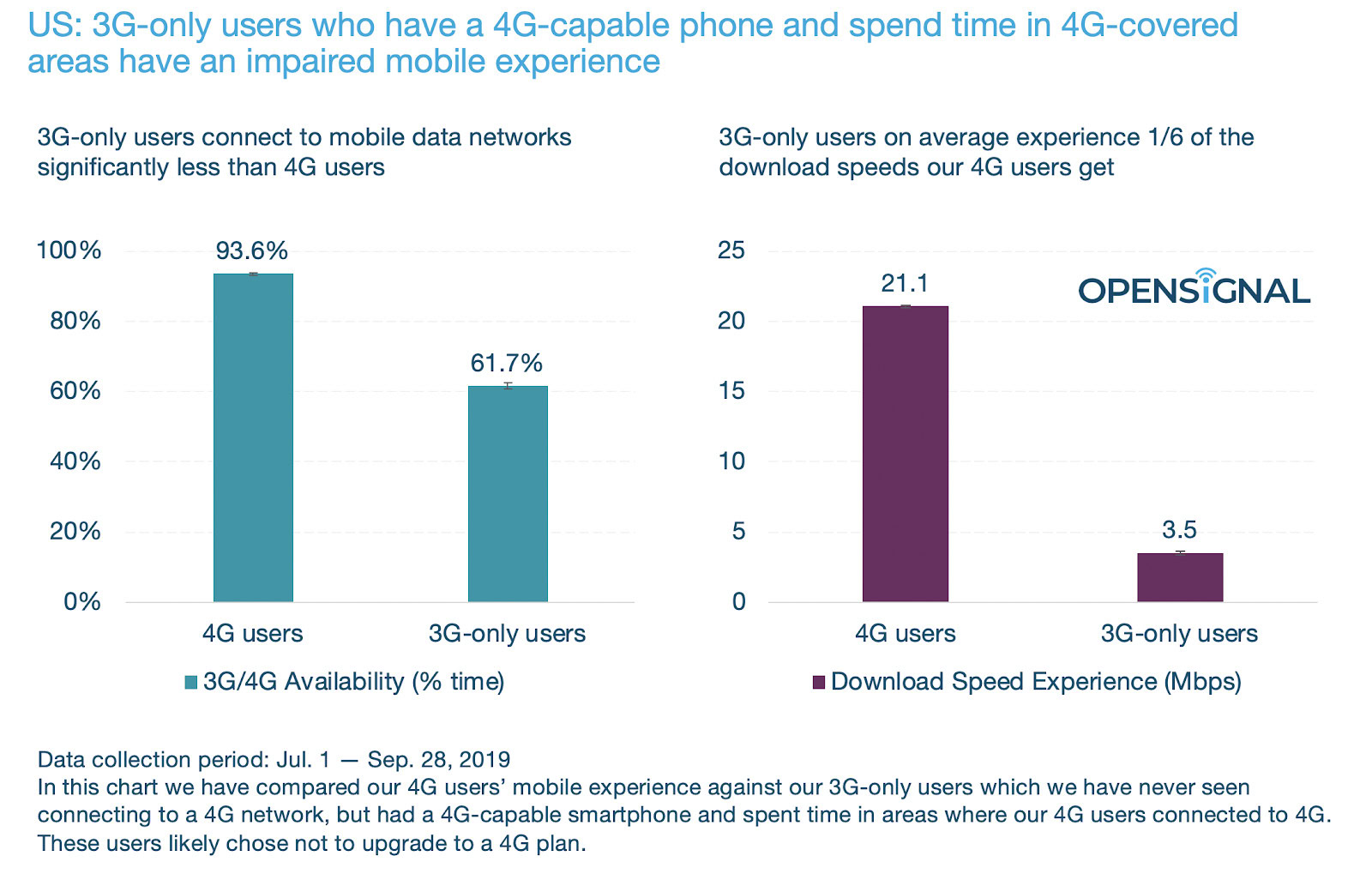Affiliate links on Android Authority may earn us a commission. Learn more.
Why are 30 million Americans still using 3G networks, and why does it matter?
Published onDecember 19, 2019

Even with the advent of 5G just around the corner, millions of Americans still have a difficult time finding 4G connections. In fact, a surprising amount of these people don’t even use 4G at all.
A recent study conducted by OpenSignal revealed that nearly 1-in-5 Americans still exclusively use 3G. That’s a whopping 30 million people. But why is that the case, and what does that mean for the future of mobile connectivity? Read on to find out.
Related: FCC accuses US carriers of overstating coverage maps
What the data says

OpenSignal conducted this data collection study between July 1 and September 28 of this year. The company discovered that of these 30 million 3G-only users, there are three main reasons why they don’t use 4G.
Nearly 83% of these users just don’t have a 4G plan, 13% don’t have access to 4G connections at all, and finally, 4% simply don’t have a 4G-capable smartphone.
Related: Best affordable phones that won’t let you down on performance
OpenSignal isn’t the only company with data to back this up either. According to global carrier organization GSMA, nearly 20% of US wireless connections were still using 3G at the end of last year. That data lines up perfectly with OpenSignal’s recent findings.
Fortunately, the majority of these 3G-only users could easily shift to using 4G by merely upgrading their mobile plans. But even if carriers did convince these customers to upgrade, what difference would it make?
Why does it matter if Americans use 3G?

Well, getting users to upgrade is important for a couple of reasons. The first and most obvious reason is that 3G just isn’t as fast or reliable as 4G.
According to OpenSignal, 3G connectivity is only accessible to users about 62% of the time. 4G users, on the other hand, benefit from available connectivity nearly 94% of the time, on average.
Read also: Live in a rural area of the US? Here’s how to pick the best wireless carrier.
On top of that, when 3G users are connected to the internet, they only experience about one-sixth the speed of 4G connections. The average 3G connection maxes out at about 3.5Mbps, while the average 4G connection sees 21.1Mbps.

US carriers need more mid-band spectrum to more widely deploy 5G. That means companies are looking to transition existing 3G bands into 4G bands first and later into 5G bands. But, with 30 million Americans relying on 3G connectivity, that’s easier said than done. To fully usher in the 5G future, carriers need to find some way to entice 3G users to upgrade to at least 4G.
Verizon is one of the carriers most aggressively transitioning its 3G spectrums to 4G. The company plans to retire its 3G network by the end of next year.
AT&T is also currently recycling its 3G spectrum. It hopes to finish by February 2022, quite a bit later than Verizon. Unfortunately, at the end of last year, AT&T reported about 11% of its customers were still using 3G devices, so it has a lot of ground to cover before it can decommission its 3G network.
Read next: Should you upgrade now or wait for one of next year’s 5G phones?